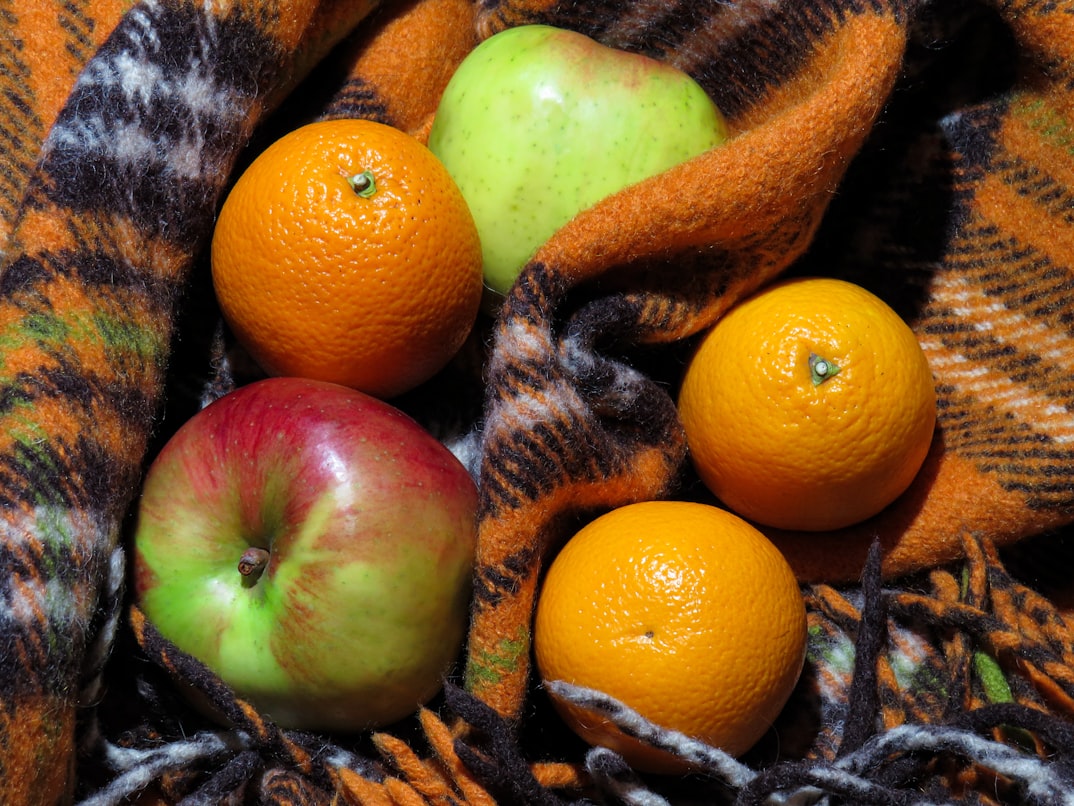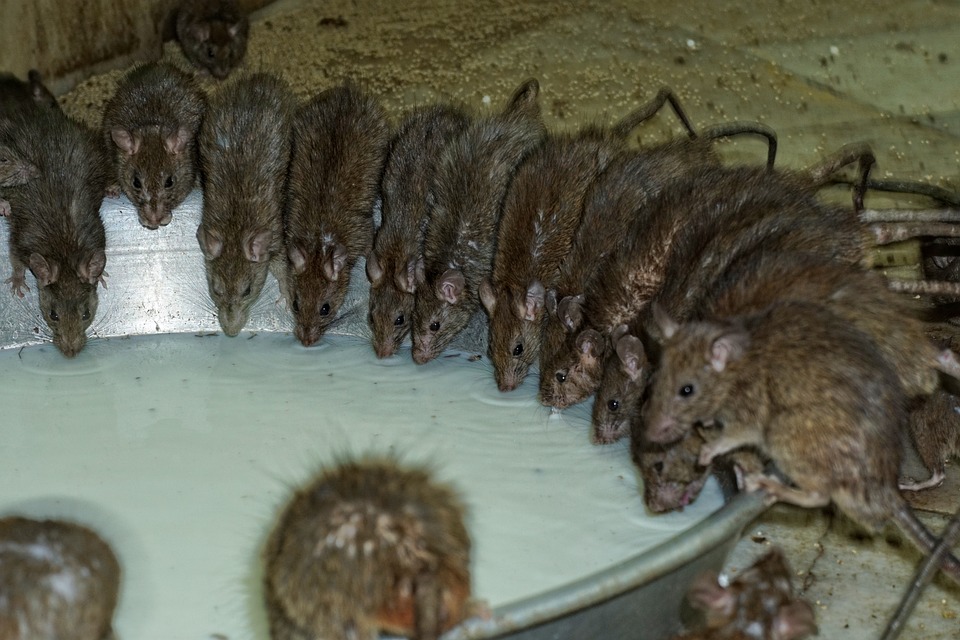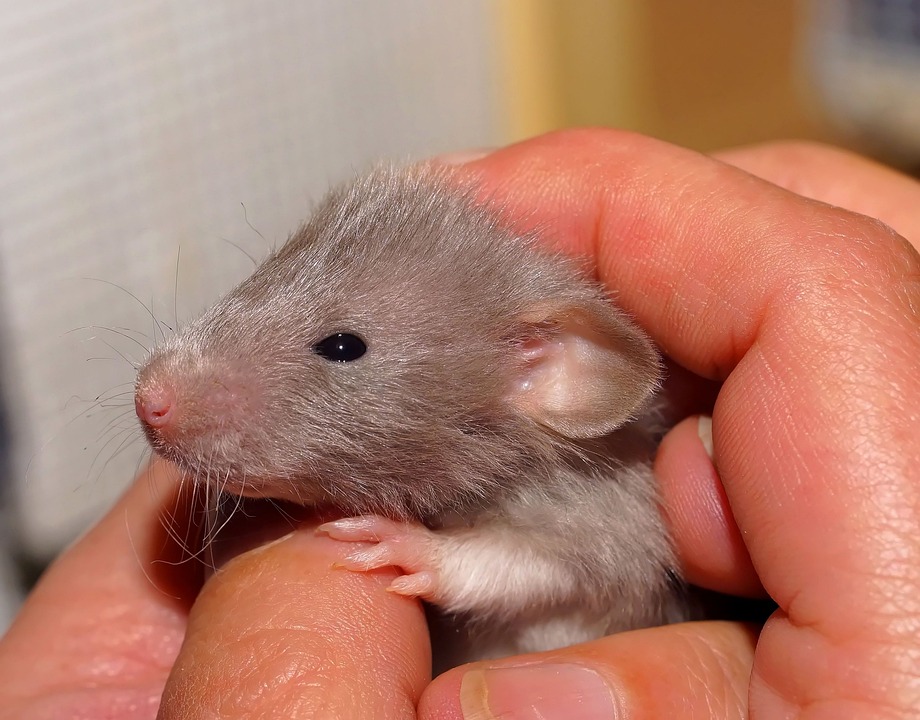As an Amazon Associate I earn from qualifying purchases.
What Do Baby Rats Eat?
The best thing for baby rats is to be cared for by their mother, regardless of whether they are wild or domesticated. Abandoned babies may be found or requested to care for as a rat owner.
In this post, we’ll detail how to care for and raise baby rats. We’ll go over everything from the moment they’re born until they’re ready to return home and start a new family of their own. We’ll discover what a newborn rat is like and how to care for them on your own.
What Do Baby Rats Eat?

Because rat moms leave their nests to forage and drink throughout the day, if you come across a nest with youngsters, the best thing to do is let it be and observe from a safe distance or return in a few hours. Mother rats may be waiting for you to go away. Even if a nest is disturbed, she’ll most likely return once the danger has passed to relocate her babies to a safer location. It’s appropriate to leave youngsters alone unless they are in immediate peril or mum can’t return, as with all wildlife.
Rat pups are able to survive on their mother’s milk alone until they reach the age of 21 days. With assistance and advice from a veterinarian, orphaned rat pups may be fed on formula.
On day 21, babies are ready to try their first solid foods. They usually start with something soft and easy, such as yogurt, ripe banana, or their mother’s regular rat pellets. These may be softened in a little formula. However, these meals don’t take the place of their mother’s milk entirely overnight because they are just starting to wean. They will continue to suckle from their mother for a few more weeks.

What Do Baby Rats Eat During The First 3 Weeks?

It’s quite tough to raise a newborn rat or mouse, especially if it’s less than a week old. Baby rats are also known as pinkies because they lack hair and are still very tiny. Finding a nursing rat to serve as a foster mother is your best option. Mother rats will almost always accept infants who are approximately the same age as their own, whether they’re born in the wild or in captivity. You can try to contact a pet store in an attempt to see whether a foster rat mother is available. Offer to purchase the nursing mother. Breeders or rat rescue groups may also be contacted.
The greatest approach to get a foster parent to accept new infants is to take the mother out of the cage and then put the orphans with her own children, rubbing them all together for a scent of her own kids. If you get a mother who no longer has young, ask for some of her dirty bedding to put in her new cage and use it on your babies. Putting them in a small cage will make her more likely to accept them sooner.
The only alternative to preserve an orphan is to rear him oneself if a foster rat mother isn’t accessible. There are three things to consider when attempting to raise a newborn rat, including warmth, sanitation, and nutrition.
How To Feed Baby Rats?

After weaning, baby rats remain with their mother for 4 to 5 weeks and are nursed and cared for. They need good nutrition, socialization, appropriate housing, hygiene, training, and exercise in order for them to get a healthy start that will benefit them throughout their lives after weaning. Your young rat will thrive if you learn how to give what it needs, just as any other pet.
Step 1
When the rat is two weeks old, offer it a well-balanced pellet food. All rats aged 2 weeks or older require a diet that is low in fiber, high in protein, and low in fat. Baby rats acquire all of their nourishment from their mother’s milk for the first two weeks. Make certain you offer store-bought pellet food that is specifically intended for rats to maintain your rat at the ideal balance of nutrients.
Step 2
Offer a variety of nutritious vegetarian medicines. If you want to keep your young rat entertained, it’s important to provide him with many options for munching. Fresh produce, nuts, fruits, and seeds, whole grain cereals, and even crackers can be incorporated into your rat’s diet in tiny amounts as additions.
Rats, like people, have distinct tastes and some may be picky eaters. Introduce a wide range of options until you can figure out which ones your rat likes the most. Rats can consume meat, but it is not required for their general health and should not be a major part of your rat’s diet. Apple seeds, oranges, and peanuts are among the many foods that rats are unable to consume. Check online before giving your rat a new food to ensure that it is safe for them.
Step 3
Twice a day, feed your rat. Twice a day, change your rat’s food and water. Your rat may not finish all of its food in one sitting, and it is likely to nibble on things throughout the day and night. To ensure that there are no uneaten calories in your rat’s dish by the following feeding, try to modify the quantity of food you give it.
Step 4
Keep your rat’s food on clean ceramic plates. Ceramic dishes are simple to maintain, don’t tip over, and minimize noise as the rat eats. Choose bowls that will fit into your rat’s cage easily and do not cause them to have a difficult time accessing their meals. It’s a good idea to clean the bowls at least once a day.
Step 5
Allow your rat to consume its droppings. Although this is an unappealing sight, rats are designed to eat their own excrement. Coprophagy is the act of eating your rat’s feces. It aids in the absorption of nutrients from your rat’s food. Rats would be unable to benefit from all of the nutrients in their diet if they didn’t eat their food twice.
Step 6
To encourage foraging, hide the food. Rats evolved to spend the majority of their time looking for food. People meet all of a rat’s fundamental requirements as pets, which may become quite monotonous for a youngster. To boost your rat’s hunting motivation, try to hide their supper in various locations throughout the room. Foraging toys that are designed to make it difficult for your rat to get at its food may be found on the internet or at a pet store.
Step 7
Provide your rat with fresh water. Attach a rodent water bottle to the cage of your rat. Change the water in your rat’s tank at least twice a day, and clean the bottle once a week. Distilled or filtered drinking water is recommended for your rat. If your rat is outside of its home, make certain it still has access to water by setting up a tiny dish of water where it is easily accessible.
How Can You Keep Baby Rats Warm?

You must give newborn rats supplemental heat until their fur becomes fluffy after approximately 3 weeks when they won’t be able to keep themselves warm. You can use a heating pad, a light bulb, or anything else that stays warm for an infant. Of course, the contents of a hot water bottle or any other reheated device will require periodic reheating.
It’s preferable to keep a thermometer handy near the baby so you can monitor his temperature. The latter can’t record decreases in temperature, so avoid using a medical thermometer. Use a small weather thermometer rather than a medical one since the latter can’t measure swings in temperature. Keep the temperature around 100 to 102 degrees F. This will be quite warm to your hand, but not scorching. Higher temperatures can be deadly; however, if the baby rat gets too chilly, he or she may contract hypothermia and die.
What Are The Natural Predators of Baby Rats?
Birds of Prey
Birds of prey are well known for devouring rats. Hawks and falcons hunt during the day, whereas owls prefer to take action at night. Because owls seek food at the same time as rats do, they’re particularly deadly to them. The Red-tailed Hawk is the most well-known and widespread large hawk in North America. Since the 1960s, its numbers have grown.
The red-tailed hawk is a large, predatory bird that can be found all across North America and Mexico. Some will migrate to Canada to breed. While red-tailed hawks are generally found in the countryside, some of them will nest and hunt in metropolitan areas. They’ll search for prey from a high vantage point before swooping down on their target.
Cats
Cats are not true rat predators, but some will take on a rat if the opportunity arises. Both the American Shorthair and Maine Coon are thought to have descended from ship’s cats that earned their keep by eliminating vermin. Some communities employ wild cats to catch rats.
Bobcats
Bobcats are more inclined to attack rats than their domestic counterparts. Bobcats can be found in thirteen distinct subspecies throughout North America, some of which may be found all the way from Canada to Mexico. Bobcats are adaptable and can live in swamps, farmland, and even cities, although they enjoy woods. Bobcats will hunt larger animals including deer if the smaller prey is unavailable.
Cougars
Rats are eaten by various predators, including cougars or mountain lions, which consume everything from insects to large deer. They have a vast territory that runs throughout most of North America. The cougar (Puma concolor) is the biggest cat in North America, with males exceeding eight feet in length and weighing up to 220 pounds. Cougars are typically ambush hunters that can suffocate their prey by biting its neck or breaking its back when leaping on it.
Snakes
Snakes prey on a wide range of animals, including mice, frogs, and squirrels. Rat snakes, as the name suggests, frequently kill rats. Rat snakes are nonvenomous and capture their victims by constricting them. There are numerous species within this genus, and they may be found throughout the world.
Dogs
Some breeds are known for their capacity to catch rats, even if not all dogs can aid you in eradicating your rat problem. Many of them are terriers, a small dog breed that was developed to pursue rodents and other little creatures that live underground. Terriers are energetic and excel diggers.
Many dog breeds have certain features in common, such as a strong sense of smell that helps them to find rodent prey. Raccoon dogs have muscular front legs that allow them to dig efficiently, and they have a powerful bite that allows them to capture prey. In most cases, dogs kill rats by shaking them and snapping their neck.
Weasels
Weasels are also excellent rat hunters. Weasels, like owls, are nocturnal and hunt at the same time as rats for food. Weasels pierce their prey’s neck numerous times with their teeth to kill it. Weasels will consume mice, voles, rabbits, birds, bird eggs, and frogs in addition to rats. A weasel’s tiny physique enables it to fit into tight places while pursuing its dinner.
Are Baby Rats Healthy To Eat?
In some areas of the world, rats are a normal dish. While many of us consider rats to be vermin and pests, they are consumed in certain parts of the world. In many countries, this is a way of life and tradition that has been passed down for years. While the rats that people consume may be from various species and come from different locations, they are usually wild animals sought after for food. To catch them, people employ a range of traps. However, they never use poisonous baits since this would taint the meat and make it uneatable.
Rat is a popular meal in many parts of the world, including many Asian nations. One reason for this is because they are plentiful and readily available, making them an excellent source of protein for everyone.
The major concern with purchasing rat meat from the market is that you have no way of determining where it originated. It may be a beautiful, fat rat from a clean rice field, or it could be a rat that has eaten garbage in city sewers and become obese. It is up to the consumer to do their homework and attempt to figure out what type of rat they’re buying.
Amazon and the Amazon logo are trademarks of Amazon.com, Inc, or its affiliates.


